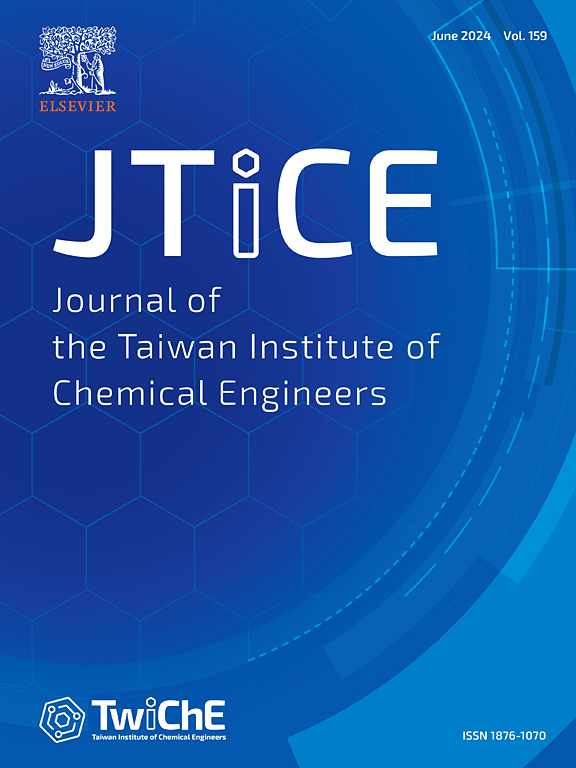Production of MWCNTs from plastic wastes: Method selection through Multi-Criteria Decision-Making techniques
IF 5.5
3区 工程技术
Q1 ENGINEERING, CHEMICAL
Journal of the Taiwan Institute of Chemical Engineers
Pub Date : 2025-02-05
DOI:10.1016/j.jtice.2025.106000
引用次数: 0
Abstract
Background
The global challenge of plastic waste generation warrants innovative, cost-effective, sustainable, and scalable solutions. Conversion of different non-recyclable plastic waste into value-added products (waste to wealth) such as carbon nanotubes (CNTs), graphene, carbon black, etc. holds significant promise in the waste management/valorization sectors with economic viability. This study focuses on identifying the optimal method for producing multiwall carbon nanotubes (MWCNT) from plastic wastes from several popular MWCNT synthesis methods such as chemical vapor deposition, pyrolysis, spray pyrolysis, gasification, microwave-assisted pyrolysis, etc.
Methods
The authors implemented Multi-Criteria Decision-Making (MCDM) techniques. They ranked different MWCNT production methods from waste plastic based on several operational, economic, and qualitative parameters, including raw material cost, operating temperature, reaction time, pressure, production yield, and MWCNT diameter. MCDM methods like TOPSIS, Grey Relational Analysis, and Simple Additive Weighting rank different synthesis processes.
Findings
MCDM analysis performed using subjective and objective criteria weighting concluded that gasification is the most sustainable and cost-effective method having a high assessment score above 0.9 for MWCNT production. In contrast, pyrolysis and spray pyrolysis are the least favoured options with an assessment score ranging between 0.3 to 0.6. The current research provides a clear roadmap for developing a sustainable, economically viable solution for plastic waste valorization. It also helps us to find sustainable and efficient MWCNT manufacturing techniques from non-recyclable plastic waste that have the potential to pave the way for greener sustainable waste management.

求助全文
约1分钟内获得全文
求助全文
来源期刊
CiteScore
9.10
自引率
14.00%
发文量
362
审稿时长
35 days
期刊介绍:
Journal of the Taiwan Institute of Chemical Engineers (formerly known as Journal of the Chinese Institute of Chemical Engineers) publishes original works, from fundamental principles to practical applications, in the broad field of chemical engineering with special focus on three aspects: Chemical and Biomolecular Science and Technology, Energy and Environmental Science and Technology, and Materials Science and Technology. Authors should choose for their manuscript an appropriate aspect section and a few related classifications when submitting to the journal online.

 求助内容:
求助内容: 应助结果提醒方式:
应助结果提醒方式:


